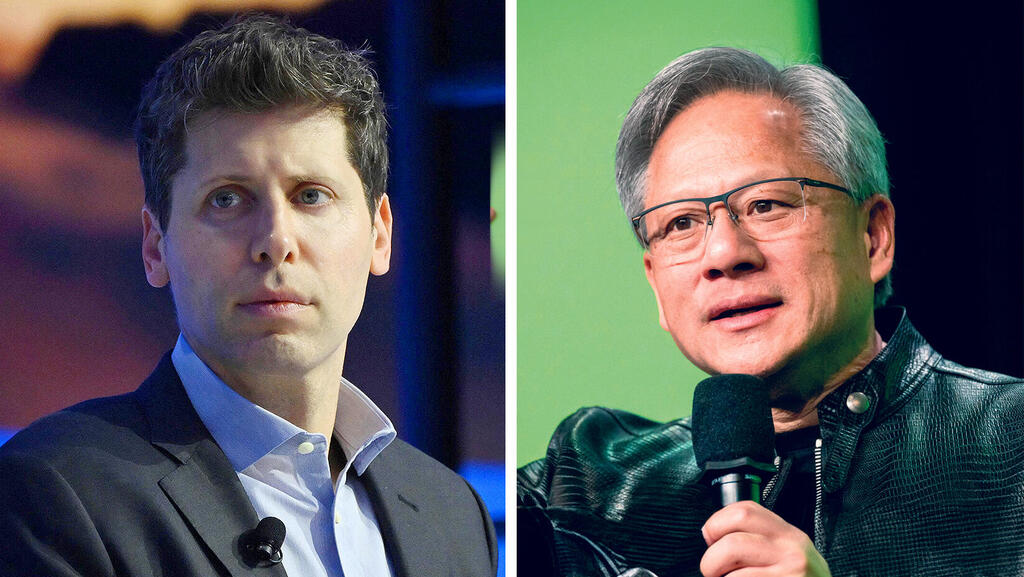
The question that will determine the future of AI
According to Sequoia's calculations, even under the optimistic assumption that each of the technology giants will generate $10 billion annually in revenue from artificial intelligence, a gap of half a trillion dollars remains between expenses and revenues in the field. Goldman Sachs is also pessimistic, noting that technology giants that are spending more than a trillion dollars on AI investments in the next five years will have little to show for it.
After two years of great enthusiasm for generative artificial intelligence, a pressing question is starting to preoccupy the major players: can the field generate sufficient income to offset its substantial operating costs? Many doubts arise. David Cahn, a Partner at Sequoia Capital, recently raised what he calculated as "AI’s $600B Question", explaining that the AI bubble is reaching a tipping point and navigating what comes next will be essential.
According to Cahn, the math doesn't add up, a claim he supports with a simple calculation. He doubled Nvidia's revenue projections to account for the costs associated with operating data centers, which require chips, electricity, buildings, and water for cooling. He then doubled this amount again to reflect the profit margins of end users (e.g., startups purchasing AI computing from companies like Microsoft, Amazon, and Google). This calculation suggests that the field should generate annual revenues of $600 billion. However, even with the optimistic assumption that each of the technology giants—Alphabet, Microsoft, Apple, Amazon, and Meta—will generate $10 billion annually from AI, and that smaller companies such as Oracle, ByteDance, Alibaba, Tencent, and Tesla each generate $5 billion in annual revenue, there is still a $500 billion gap between expenses and revenues in the field. Where will the money come from?
Jeremy Grantham, an investor known for predicting the financial crises of 2000 and 2008, suggested last year that artificial intelligence is a bubble that may soon deflate. He added that technology stocks have reached an "eye-popping peak" and will likely experience a sharp decline.
How eye-popping? In 2023, nearly $190 billion in investments flowed into AI. A total of 1,812 startups raised funds that year—a 40% increase compared to 2022, according to a report by Stanford HAI. With the publication of financial reports for the first quarter in April, all the major technology companies announced increased investments in the field: Meta raised its forecast for AI expenses this year to $10 billion; Alphabet announced it would invest $12 billion (or more) each quarter, primarily in data centers; and Microsoft, which invested $14 billion in the last quarter, expects this figure to increase "substantially."
Capital Group estimates that the technology giants alone will invest $189 billion in 2024—over a fifth of all investments among S&P 500 companies. While the tech giants can afford this due to strong revenues and profits, what about the smaller companies?
The numbers are staggering, doubts are emerging, and signs of problems are surfacing with end users. Stability AI, a prominent startup in the field with a valuation of over $1 billion at the end of 2022 and over $250 million raised, has reportedly only generated $11 million in 2023 while incurring $153 million in operating costs. The company recently announced layoffs of 10% of its workforce. Emad Mostaque, the former CEO of Stability AI, who resigned in March, predicted last year that this would be the biggest bubble of all time, dubbing it the "dot AI" bubble.
This month, the alarmed community was joined by the first huge institutional player - Goldman Sachs, which published the first sober report of its kind on the artificial intelligence industry. For the bank, the question is greater than $600 billion. "Tech giants and beyond are set to spend an estimated $1 trillion on AI capex in coming years. Will this investment pay off? And if it doesn’t, what does that mean for businesses and investors?" they wrote.
Although the report tries to provide a complex and balanced picture, the general feeling is pessimistic. According to Daron Acemoglu, an economics professor from MIT who is quoted in the report, artificial intelligence will automate less than 5% of tasks in the next decade, and will contribute a measly 0.9% to GDP growth. Head Goldman Sachs Global Equity Research Jim Covello adds that the technology is not designed to solve complex problems that would justify the high costs.
Related articles:
Although the report attempts to present a balanced view, the overall sentiment is pessimistic. Daron Acemoglu, an MIT economics professor quoted in the report, predicts that AI will automate less than 5% of tasks in the next decade and contribute only 0.9% to GDP growth. Jim Covello, head of Goldman Sachs Global Equity Research, adds that AI technology is not designed to solve complex problems that would justify its high costs.
This marks a sharp contrast to a Goldman Sachs report published in May, which estimated that generative AI would increase U.S. productivity by 9% and GDP by 6.1% within a decade. Capital Economics predicts that the bubble may burst as early as 2026, leading to a decade of disappointing average annual stock gains of 4.3%.
Investment funds and banks responsible for injecting significant capital into AI over the past two years are reluctant to use the term "bubble," as they remain caught up in the hype. For example, SoftBank recently announced a preference for investing in AI companies over other strategies, including share buybacks. SoftBank has previously made high-profile investments, such as its $12 billion investment in WeWork, which failed. In June, Masayoshi Son, founder of SoftBank, described the previous investment round as a "warm-up round."
A bubble requires careful consideration, measured investment, and a critical attitude towards the valuations of certain companies. The current situation bears a striking resemblance to the dot-com bubble, with parallels in the rapid price increases of companies like Nvidia and Cisco during the late 1990s, just before the bubble burst. The technology sector’s dominance in the S&P 500, making up 32% of the index—its highest rate since the dot-com era—further fuels these comparisons. Only three companies—Apple, Microsoft, and Nvidia—account for a fifth of the index, which raises concerns.
Regarding a potential bubble, the crucial question is not when or how it will burst, but what will remain afterward. The dot-com bubble, despite causing significant damage, eventually cleared the sector of ineffective companies and laid the groundwork for future technological advancements. The AI bubble, while still evolving, holds great potential. Today’s AI products, such as text-to-image generators and chatbots, are popular with users, but the big capital is not yet found in their immediate uses by CPAs, developers, or advertisers.
Do these uses justify the enormous operating costs? Not yet. However, the knowledge gained in developing these products, the data centers, and the infrastructures supporting them could create new opportunities and sustainable products after the bubble bursts.
